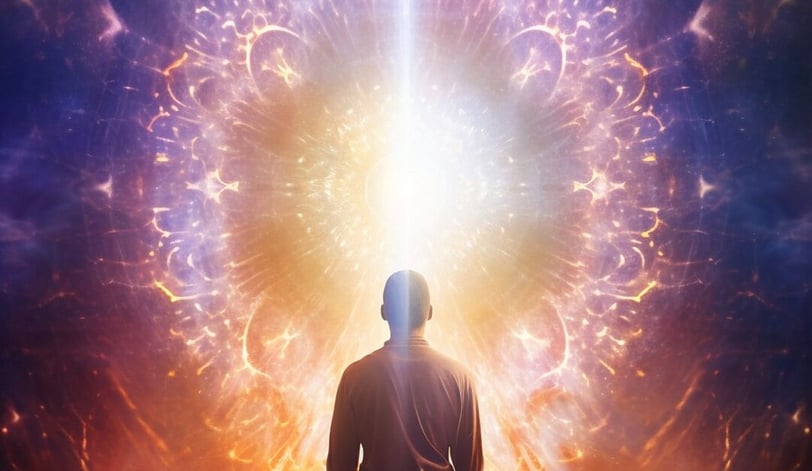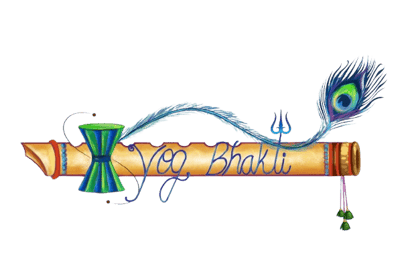The Core
Just as the ocean's depth is immeasurable, so too is a precise definition of Yogbhakti Tantaram elusive. Simply put, ‘Yog’ is about purifying the mind by ridding yourself of all thoughts to eventually let go of the self, reaching a state of transcendence and discovering your true 'atman'.
1/17/20253 min read


This involves practices to still the mind and body and release tension. Bhakti, the path of devotion, ultimately leads to the blissful union of the individual soul with the absolute love that is Brahman. ‘Tantram’ provides a structured path, a technique allowing the practitioner to cultivate both Yog and Bhakti.
In Kali Yuga, Shiva, as cited in holy tantric texts, proclaimed this path the shortest to achieve supreme yoga and bhakti. It is like a journey from the individual self to the ultimate reality, a movement from the finite to the infinite. Through Yog, we can eliminate the deep-seated karmic patterns originating from our first earthly incarnation.
As our physical and subtle bodies refine, a pure, divine love flows through us, a vessel for its expression, leading to the ultimate truth. By doing this, we transcend the limitations of duality, purifying our karmic imprints and integrating our multiple bodies—physical, emotional, and spiritual—to return to our origin.
Yog and Tantra provide adaptable techniques and processes, catering to each person's unique constitution and spiritual progress. Techniques like kriya yoga, mantra repetition (jaap), homa (fire rituals), and ritual practices, or a combination of kriya yoga and mantra jaap, can be used.
Like a river's journey, life follows a path, encountering various people, succumbing to external influences, and absorbing both positive and negative experiences, much like the river absorbs sediments. Our past lives' karma, our inherent sattvic, rajasic, or tamasic nature, and the learning opportunities presented to us all influence the process. The weight of past actions, inherent tendencies, and presented chances shape our path.
Every time a soul is born, it comes with a predetermined plan and map for its life, taking into account various factors. To decode it properly, we must look to the intricate lines of our birth chart, the detailed roadmap etched into our palms, and the ancient wisdom held within the akashic records.
Only the blessings of a guru or ishta can alter one's karma or interfere with their soul's destiny, a sacred, unbreakable plan. But yes, by helping to pinpoint the karmic lesson's root cause and suggesting sadhna techniques to mitigate its impact and prevent accumulating more tamasic karma, occult practitioners and spiritual guides aim to alleviate suffering and promote growth.
As the soul descends, experiencing the push and pull of life's journey, low emotions like fear, pain, grief, insecurities, and judgments accumulate, forming blocks that manifest as physical and mental diseases, much like sediment building in a river's path. As we become aware of our consciousness through kriya yoga, we feel the pure pranic energy flowing through our Chakras (energy centres) and the three main Nadis (Ida, Pingala, and Sushumna), a sensation like a gentle warmth spreading throughout the body.
Through tantra yoga, we purify ourselves with the chanting of mantras and sacred rituals, feeling the vibrations resonate within. Both processes aim to reveal your true self, guiding you to surrender to your Isht, break the cycle of birth and death, and ultimately merge with the divine.
Ancient paths, whispered of in the Vedas, Upanishads, and the Bhagavad Gita, promise a journey to ultimate tranquility; these paths are rich with history and spiritual significance. You can choose from paths like Karmic (Action), Jnana (Knowledge and Yog), and bhakti (Devotion). Most people stick to a single path, reluctant to explore others.
Through years of experience, we've learned that combining different approaches is crucial, as each offers unique advantages that streamline the overall process. The sights and sounds of each path are different, yet enriching. They will always remain incomplete if one is not following the other, as they rely on each other for completion.
Just as the static, universal consciousness of Purusha (Shiva) embodies yoga and knowledge (gyan), Prakriti (Shakti, the Divine Mother) represents the dynamic expansion of the cosmos through action and activity (karam and kriya); their union, Atman-Parmatman, is pure love, blissful surrender (bhakti), and embodies the devotion of Radha and Krishna. The method and spiritual practice required to undergo this process is referred to as (tantram). We call this integrated, holistic approach "Yog Bhakti Tantram.”
Because our lives have become so busy and robotic, we've adopted more practical, efficient, and aggressive approaches; this is the main reason for this wholesome path. Releasing the numerous karmic births, tamsic tendencies, and ingrained obstacles isn't a simple task; it requires considerable effort and resolve. Yet, the right approach, a true shot, and the blessings of guru and Isht can dramatically accelerate the sadhana's effectiveness.


